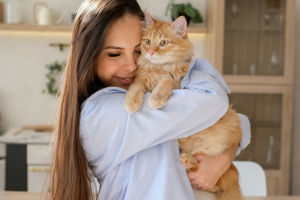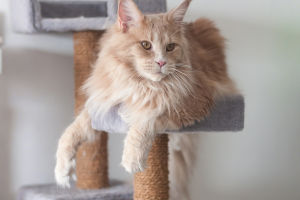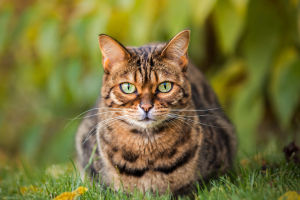Have you ever wondered why your dog seems to know exactly when you're sad, while your cat might just quietly observe? Today, we're diving into the fascinating emotional worlds of our two most beloved companions—dogs and cats.
We'll explore how these animals perceive our feelings and respond differently, helping us better understand their unique ways of connecting with us.
Emotional Expression: Dogs vs. Cats
Dogs generally express a wider range of emotions than cats, at least from the perspective of their owners. Research shows that dog owners report their pets displaying more primary and secondary emotions, such as joy, fear, affection, and even jealousy, compared to cat owners who notice fewer emotional expressions in their feline friends.
This difference partly stems from dogs' longer history of domestication and selective breeding, which has enhanced their social intelligence and ability to communicate with humans.
Cats, on the other hand, tend to show emotions in more subtle ways. They might not wag a tail like dogs do, but their body language—such as ear position, pupil dilation, and tail flicks—can reveal their mood. While cats may seem aloof, they are capable of feeling emotions like anger or contentment, but they often express these feelings less overtly than dogs.
Brain Differences Shape Emotional Cognition
One reason for these behavioral differences lies in the brain structures of dogs and cats. Dogs have a larger cerebral cortex, the brain area responsible for social cognition and communication. This helps dogs read human gestures and moods more easily, making them highly attuned to our emotions. In contrast, cats have a larger prefrontal cortex, which supports problem-solving and independent decision-making, reflecting their more solitary and self-reliant nature.
Neurologist Suzana Herculano-Houzel's studies found that dogs have significantly more cortical neurons than cats, which suggests dogs may have a higher capacity for complex social and emotional processing. This neurological foundation helps explain why dogs often appear more empathetic and responsive to human feelings.
How Dogs Respond to Our Emotions
Dogs are known for their remarkable ability to sense and respond to human emotions. They can detect subtle changes in our facial expressions, tone of voice, and body language. For example, dogs often approach and comfort their owners when they sense sadness or stress, displaying behaviors like nuzzling or licking. This responsiveness is strengthened by the strong emotional bond many owners feel with their dogs, who are often considered family members.
Moreover, dogs' social nature means they thrive on interaction and tend to seek out ways to reassure or engage with us when we're upset. Their long history of co-evolution with humans has fine-tuned their emotional sensitivity, making them excellent companions in times of emotional need.
How Cats Perceive and React to Us
Cats may not always respond as openly as dogs, but they are far from indifferent. Cats often observe and assess human emotions before deciding how to react. For instance, a cat might choose to stay close and purr quietly when their owner is calm and relaxed, or keep a distance when sensing tension. Their responses are generally more reserved and less predictable, reflecting their independent instincts.
Interestingly, cats' emotional expressions are often linked to their comfort and trust in their environment and owners. When a cat rubs against you or gently kneads, it's a sign of affection and emotional connection, even if it's less demonstrative than a dog's wagging tail.
Building a Better Emotional Bond with Our Pets
Understanding these emotional differences helps us meet our pets' needs more effectively. With dogs, we can engage more in social play and provide reassurance during stressful moments. With cats, patience and respect for their space often foster stronger bonds. Both species benefit from consistent, loving attention that acknowledges their unique emotional languages.
As pet owners, we play a crucial role in interpreting and responding to our companions' feelings. The more we learn about their emotional worlds, the deeper our connections become.
Let's Share Our Experiences
Now, we'd love to hear from you. How do your pets show their feelings? Have you noticed differences between your dog's and cat's ways of understanding your moods? Sharing stories helps us all become better pet parents and enriches the special bond we share with these amazing animals.
By appreciating the emotional nuances of dogs and cats, we not only improve their well-being but also deepen the joy of companionship that makes our lives fuller. Let's continue exploring and celebrating the unique ways our furry friends touch our hearts.


